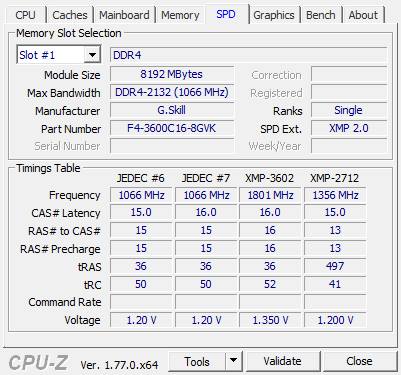

So I’m going to explain why that might be, and go over what you can do to make sure that your RAM runs at full speed. You might find that one system had BIOS-level power management enabled, or Turbo boost disabled.It should be pretty simple, right? If you bought a kit of 3200 MHz memory, the modules should run at 3200 MHz when you install them.īut unless you actually set them up to run at that frequency- assuming your other hardware is compatible-they’re only ever going to run at far lower frequencies-probably around 2133 MHz. For example, if you had two supposedly identical systems that were getting wildly different results, that would be a reason to do some further investigation. But I still find it useful for comparing different processors and different systems. Obviously, this is just a very quick synthetic CPU test. You also should run this test several times, with short gaps in between each test, so you can average the results. If your processor cores are busy doing other work, your CPU-Z benchmark scores will be artificially low. This is a measure of how “fast” your processor is.įor accurate results, you should only run these tests when your system is idle (from a CPU perspective). Second, it runs a CPU Single Thread test that measures the single-threaded CPU performance. This will peg your CPUs at 100% for about 7-8 seconds. First, the benchmark runs a CPU Multi Thread test that measures the overall CPU capacity of your system. The Bench tab lets you run a very quick (about 15 seconds) synthetic CPU benchmark against your system. If XMP were enabled, I would expect to see a DRAM frequency of about 1800.0 MHz (since it is double data rate RAM). This is bad, since I have DDR4-3600 memory in my system. In the example below, my DRAM frequency is only 1064.5 MHz. I have a lot more details about this in this blog post. You can still check your memory speeds though, since it is possible that the CPU can officially support higher speed memory.ĭepending on the processor, having XMP enabled can have a very noticeable positive impact on performance. You probably won’t have this option on on most systems from large vendors like Dell or HPE.

This will let your memory run at a higher XMP speed rather than the default JEDEC speed. With most DIY motherboards from vendors like ASUS, ASRock, Gigabyte, and MSI, there is usually an option to enable Extreme Memory Profiles (XMP). This tab also shows the current DRAM frequency. With most mobile and desktop processors, you want to be in dual-channel mode rather than single-channel mode. It also shows how many channels your RAM is using. The Memory tab identifies the type and overall amount of memory that you have in your system.


 0 kommentar(er)
0 kommentar(er)
